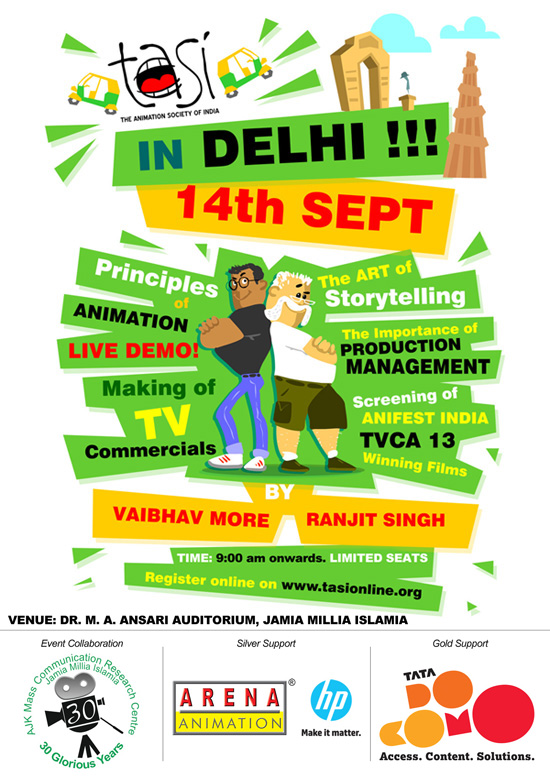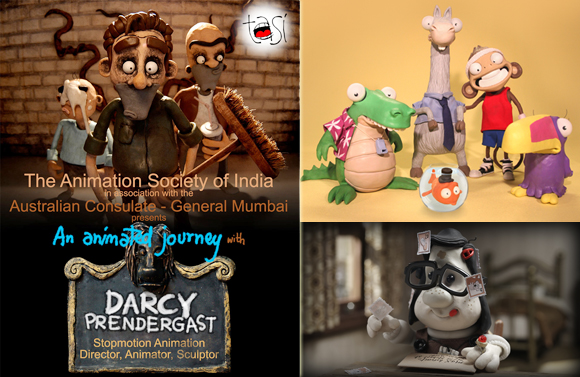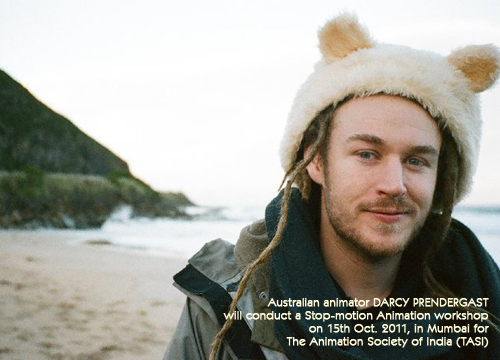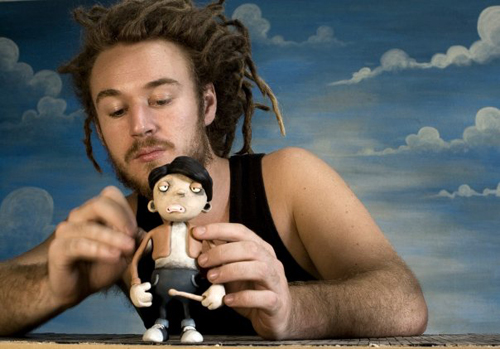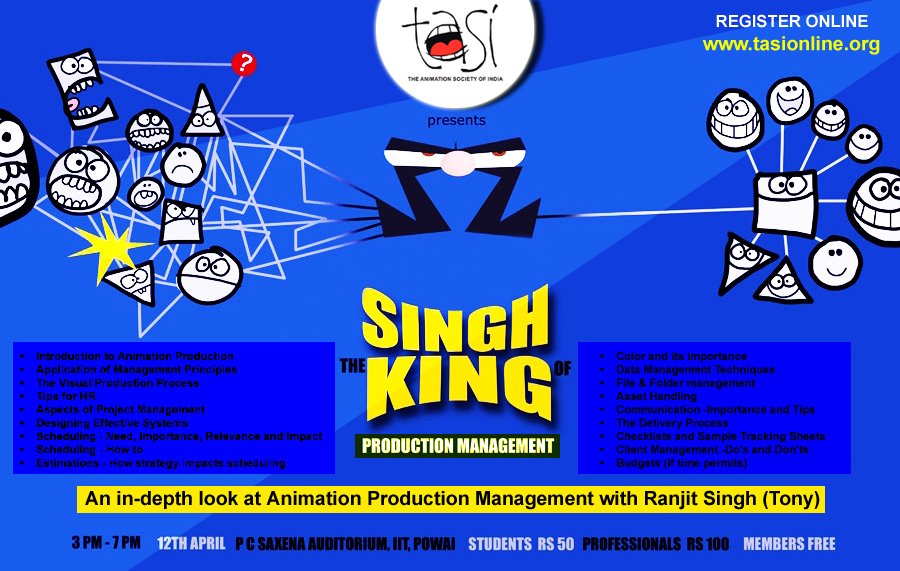Full day workshop in New Delhi by Ranjit Singh & Vaibhav More
[Scroll to the bottom for the slideshow]
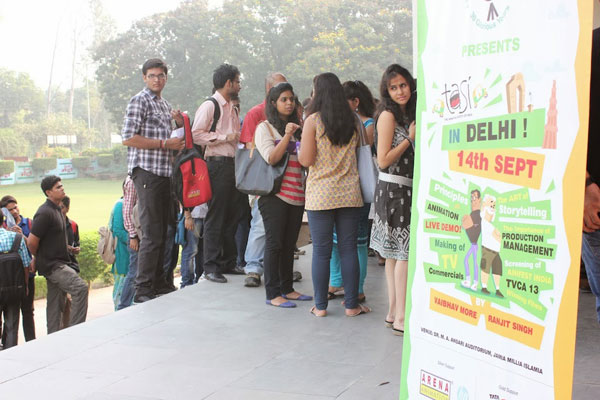
8.00 a.m. on a lazy Saturday morning and people were already waiting at the venue. The infrastructure at the Dr. M A Ansari Auditorium was put to its first ever real test after its recent renovation, as 650+ enthusiasts gathered for TASI’s maiden event in New Delhi.
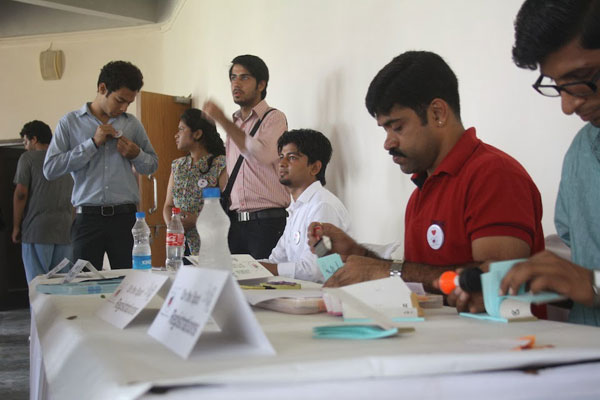
September 14, 2013 – TASI conducted a full day event covering case studies on animated TV commercials, importance of production management, animation principles and craft of story telling. Industry experts Vaibhav More and Ranjit Singh took the stage and enthralled the enthusiastic audience with examples, hands-on demos, practical tips, interactive discussions laced with a heavy dose of their trademark wit and humor. In keeping with its expertise to curate relevant content, TASI pulled out all the stops as it pushed hard to infuse life and excitement into the community scene in the capital. The philosophy of freely sharing knowledge was not lost on the participants, affirmed by a plethora of questions from an eager audience, wanting to learn, absorb and hopefully implement what they experienced over the day.
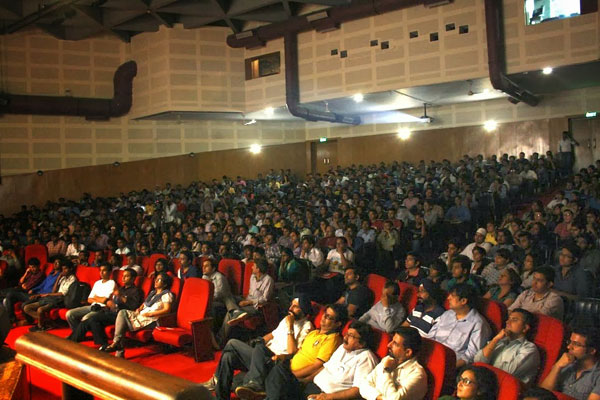
“We have always been jealously looking and reading about TASI’s activities all over the country and were eagerly waiting for them to come to Delhi. I am really excited that we finally have them here and we hope that this will be the first of many such TASI events in the capital”, said Shaibani Azam (Professor of Digital Graphics and Animation – AKJ MCRC – Jamia Millia Islamia) as she set the ball rolling for the day.
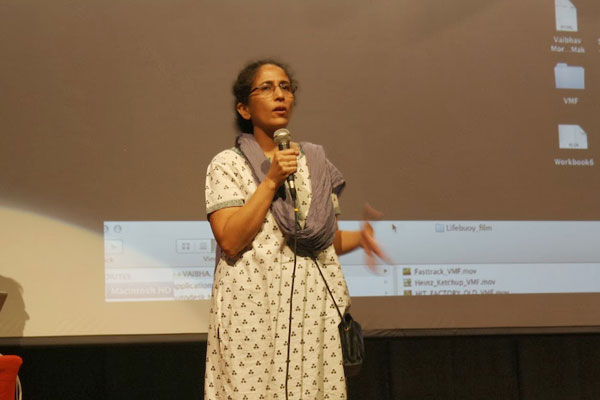
Starting off with Case Studies on the making of Animated TV Commercials – Vaibhav More showcased some of his recent award winning work. “I come from a highly educated family that has physics professors and microbiologists, but me, I’m just an artist with a bachelor’s degree in fine arts. I took my fundamental training very seriously and completed my 5-year degree successfully in 6 years!”
Laying stress on the importance of practice, diligence, hard work and above all passion, he talked about the nuances of his approach to any project. “I don’t have a very large team, in fact it’s mostly me and another artist –Prashant so I have to be super careful and clear about what I’m trying to achieve. I don’t have the luxury of a large studio where multiple artists can take care of multiple tasks. But this has its advantages as I can pretty much move at my own pace, design and implement ideas and do stuff without having to wait for someone else.” He laid a lot of stress on initial research and development as well. “Be honest about your strengths and weaknesses with your clients and more often than not, they will understand and work around them, with you as a team.” Explaining this point he showed his latest Lifebuoy hand wash commercials and gave a detailed inside view of how he conceptualized and executed the unique character designs. “I cannot do hair, fur, complex simulations and a whole lot of other fancy things, but I can design and I can animate, that’s where my strength is and that is what I put in front of the client. Fortunately they saw merit in what I was proposing and we designed the entire TVC campaign around our strengths. In the end, everyone was more than happy with the result.”
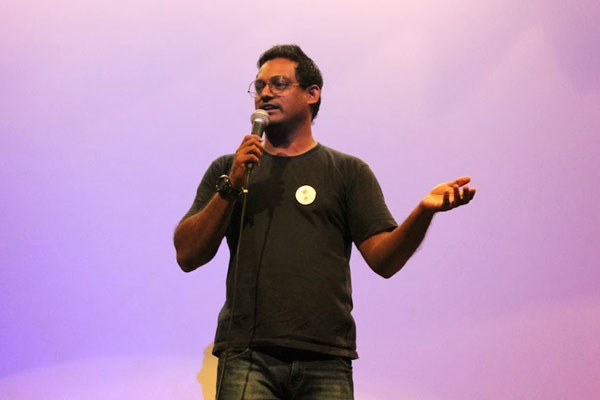
Vaibhav also talked about his initial years where he worked as an animation artist for MTV. His formative years laid the foundation for his confidence in his art and belief in animation as a career choice.
The next session was on the importance of production management in animation and art. Introducing the industry veteran Ranjit Singh (Tony), Vaibhav remarked, “Now you will understand how to effectively manage the kind of work I have shown you, Tonyji is the first author from India who has written about production management for animation and has loads of practical work experience over 2 decades in the industry which I’m sure you can learn from.”
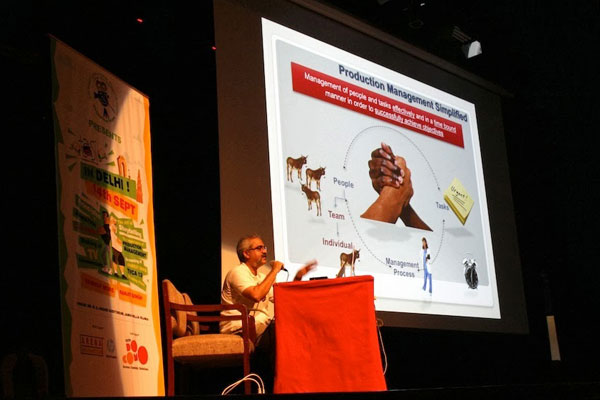
Taking the stage, Tony gave a brief insight into his early years and the experiences he had working for the most technically advanced company in India at the time. “Highly educated families with barely educated artists seems to be the norm here today”, remarked Tony. “We have MBA’s / Engineers and Economics Masters in my family. So I had to be the oddball. Too much of everything is bad so I decided to valiantly sacrifice my higher education in order to maintain equilibrium in the larger scheme of things. I’m just a commerce graduate who learnt on the job and slogged his way up the ladder.”
Starting his career in 1989 he was lucky to have been accepted as a trainee in an animation and graphics company that pretty much pioneered computer animation in India. “I was surrounded by 6 pointers from IIT, all technically brilliant people, and yes, it was extremely intimidating, to be in the midst of people who talked funny. Arriving from Delhi by train, I was made to wait for 8 hours outside a small office before I was even interviewed, but I was determined to learn and to do whatever it takes to build my future career in animation. Starting off. I worked as an intern, runner, gopher, tea-boy and production flunky, I spent my days reading about animation including manuals and user guides of the software that the company used. This went on for about 6 months and after that I would spend nights practicing on the systems whenever they were available – which was not very often. The company practically wrote all of its compositing software and so I learnt from a fundamental approach, rather than a menu driven one. We had to understand the basics of image construction, the bits and bytes, in order to master the art of image manipulation. We did not have high-end machines with gazillions of RAM, nor did we have the luxury of terabytes of storage space, so frugality and discipline in work practices became second nature. It was a boon to have a set of people who with their brilliance and vast knowledge were also eager to teach –provided you were equally eager to learn. Keep your mouth shut, eyes and ears open when you start out in your careers. Do not be under the impression that you are a brilliant modeler, animator, artist, compositor or whatever before you actually deliver something that makes its mark in the real world. If your ego gets in the way, examine the work in good films and you will come down to earth. Learn the fundamentals, discipline yourself to work smart, 8 hours is a long time in a day, plan your work and be true to your self.”
The reason he explained a bit about his formative years and the conditions, under which he learnt and worked, was to drive home the point that just because an option exists should not be the reason to use it. Necessity forced them to optimize, plan and be methodical. Today machines come with terabytes of storage space and so we have become lazy in the way we organize ourselves. We don’t pay attention to how we manage our data. Files are scattered all over the place, with names that make no sense, and versions, the content of which we ourselves can’t remember. We complete a job and burn a disk to ‘back it all up’ and think that we’re done. How much of unnecessary junk are we storing? “I’ve very often met artists who want to show stuff for reviews and they make you wait endlessly while they go on a hunting spree on their systems, trying to locate the latest file on which they want comments. I just don’t see the sense in this, production management is not rocket science, its practical use of common sense.”
He further explained that since art and artists cost money and we have to spend money in order to make money, financial discipline along with organized and methodical work practices alone could help curb costs. He further reiterated that planning in the absence of control over execution is a complete waste of time. If you can’t control what you are doing, then no amount of planning is going to help. Also it is imperative that one understands the art that one intends to manage. He said, “I am appalled to see job adverts looking for production assistants and managers with 0-3 years experience! It takes a good 7-10 years of serious work on the floor, getting your hands dirty in the trenches, before you can be ready to become a production assistant let alone a manager. It’s a creative task and one that requires a slew of qualities, the most important being, that you understand the craft inside out. I have been and will continue to push for the inclusion of production management as part of the training and education curriculum in the art and animation industry. We now have a book to set the ball rolling and believe me, over time it will bring about serious improvement in our quality and professional work practices.”
He said it is important that artists learn to put a value to their time. We estimate a cost for our creations but shy away or worse still completely ignore putting a cost to our time. It is important because if we don’t, then it is foolish to expect someone else to.
Tony concluded his session with a simple example on how a miniscule 15 seconds of unproductive time per artist could balloon into a huge financial expenditure for a studio over a year. It was indeed an eye opener for many professionals in the audience who could completely relate to what he said. Taking a question from the audience as to which is the most expensive part of any project, he replied – “the one that is unplanned”.
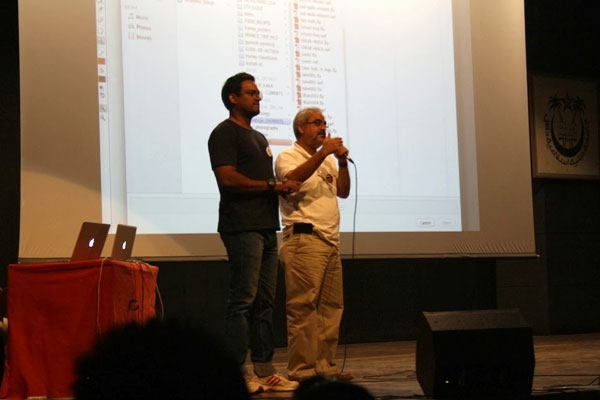
The post lunch session began with a screening of the 3 winning films from TVCA at Anifest India ’13. This was followed by a small award presentation to the winner in the student category who happens to be from Delhi. He was handed over the TASI trophy and 2 goodie bags that made up the winner kitty. After this TASI honored the Director Professor Siddiqui, Professor Shaibani Azam and Assistant Professor Atul Sinha, from AJK MCRC for their support in making the event a reality by conferring a certificate of appreciation and a copy of the famous commemorative diary to each of them. Thanking them, Tony who is also a founder trustee of the Society, on behalf of the entire community, expressed his sincere gratitude and heart felt appreciation of their efforts within such limited time. He hoped that this attitude of support and collaboration would continue for the future so as to enable TASI to conduct more such events in the city.
Vaibhav More now returned to the stage and took the audience on a whirlwind demo session on the effective use of the principles of animation. Using simple digital tools but grounded in fundamental traditional animation theory, he showed how the principles could be applied to effectively accentuate a performance. Starting with a bouncing ball, he went on to add details and before long he converted it into a little girl happily skipping her rope, effectively showing secondary action, follow through, exaggeration and anticipation. Using various exercises, he explained that it’s all in the basics, practice the basics regularly and your complex work will soon become easy. Sketching daily and using real life scenarios as your subjects is the best way to fine-tune our skills. He advised sitting in a busy public place and studying people and sketching them as they move, sit, stand, sleep and walk. Each individual will teach you something different about pose, structure, body language, walk styles, mannerisms and posture. There cannot be a better teacher than real life. After numerous examples, he finished the session with an example of a flour sack jumping over obstacles and falling to the ground. “Almost all animation principles can be covered within this simple exercise, so no amount of practice is ever enough,” he reiterated.
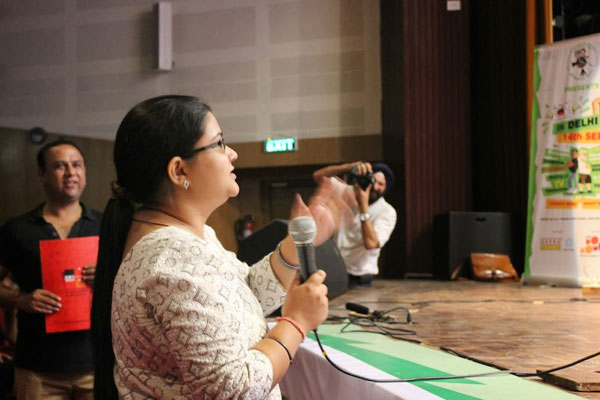
The last session on the day was on the craft of story telling using animation as a backdrop. This session brought Tony back on stage. It started with the screening of 2 award winning short films. Although both speakers had carried tons of content to share, the constraint of time necessitated that the sessions we kept brief and covered the most relevant and important aspects of each topic. Tony went on to explain how a story can be constructed from the ground up using a simple situation. He touched upon the various genres that films are categorized under and explained that once you have an idea, it is important to start filling in the blanks with relevant questions about what you intend to say through your film. The trick is to know which questions to ask and that is exactly what he showed through his presentation. He spoke about the 4 basic components of storytelling, explained the film structure and how to create a meaningful dialogue with the audience. Using 4 simple situations he showed how a myriad of story possibilities could be created just by altering a few elements, from comedy, you can shift to drama or scandal or even suspense, merely by juggling the what and how of a situation.
“Think back and remember the films that you have seen, the ones you have enjoyed them most will be in all likelihood the ones which have given you an immersive experience. If a director is able to grab you and pull you into the story, then he / she has you hooked and has succeeded.” He laid a lot of stress on the importance of good characterization, character development and casting. “Memorable characters are the ones where you remember them and not the actor playing the part. And so with animation he explained –if your audience remembers the voice over artist more than the character on screen then you have failed as an artist, director, animator, and as a creator of performance. A case in point is that while not many people may remember Mike Myers, Eddie Murphy or Cameron Diaz, they remember Shrek, Donkey and Princess Fiona. Sher Khan and Teja from Zanjeer are names that are recalled a lot easier than Pran Sahab and Ajitji who played those roles.” The hallmark of a good performance, he explained is that which helps the narrative and totally involves the audience. He said, “When in doubt or when you get stuck building a story the easiest thing to do is to simplify. Get rid of all the clutter, all that confuses what you are trying to say, and come back to the basics.”
Tony also stressed on the importance on good voice casting. “Unfortunately we follow a star based system in India where star power is more important than characters and story. The lop sided economics and lack of vision forces people to use a saleable star for a voice over, overlooking his/her relevance to the character on screen. I am mortified whenever I see dubbed Hindi animation movies. People need their heads examined for the kind of voices they select for iconic characters”. Voice casting needs to be understood and taken as seriously by a director as any other aspect of the film. It is in-fact a critical aspect of characterization and cannot be brushed aside he concluded.
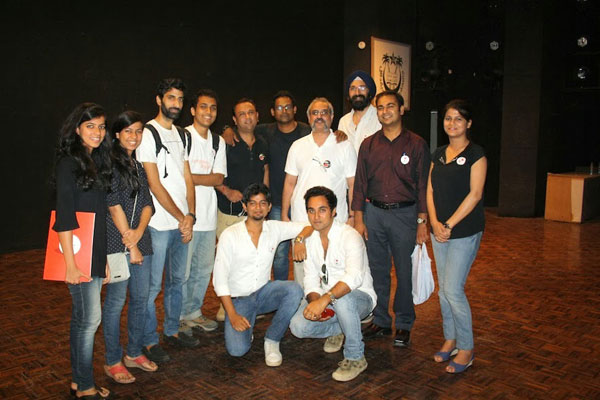
Each of the presentations was followed by an interactive Q&A session where the audience was encouraged to ask as many questions as they liked. Laying the ground for this Tony had earlier remarked – “In life, always a good policy to remember this – ask a question and look stupid or don’t ask and be stupid, it’s ultimately your life”.
The day ended with a note of thanks to all those who had made the event possible and TASI looks forward to another captivating session in Delhi very soon.
